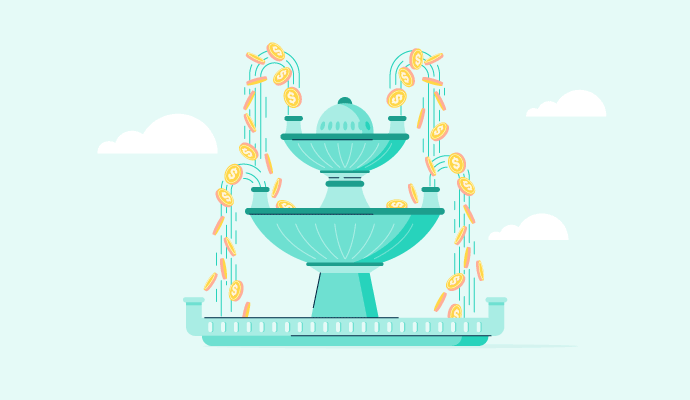November 6, 2025
 by Harshita Tewari / November 6, 2025
by Harshita Tewari / November 6, 2025

Financial clarity begins with understanding what your business owns, what it owes, and the value it holds.
A balance sheet pulls those pieces into one place, making it easier to track performance, plan ahead, and make informed decisions. And once you know how to read it, you can quickly answer practical questions like: Can we cover short-term bills? Are we taking on too much debt? How strong is our financial cushion?
A balance sheet is a financial report that shows a company’s assets, liabilities, and equity at a specific point in time. It provides a snapshot of the company’s financial position, helping stakeholders evaluate its stability and performance.
Analysts use balance sheets, often generated with modern accounting software, alongside other financial statements to calculate key ratios, benchmark results, assess risks, and support strategic decisions.
In this article, we’ll break down each section of the balance sheet, explain how it fits into your broader financial picture, and walk through examples and templates to help you get started.
Every balance sheet is built around three core components: assets, liabilities, and shareholders’ equity. Together, these elements form a complete picture of a company’s financial position at a specific moment in time.
Each component plays a distinct role:
The balance sheet illustrates the state of these three kinds of accounts to provide a holistic view of your company’s finances at a given time. The reason why it is called a balance sheet is that the assets in your company must balance out, or equal, your company’s liabilities and shareholders’ equity. To visualize it in an equation:
Assets = Liabilities + Shareholders’ equity
The balance sheet is balanced because of the practice of double entry accounting.
The double-entry accounting principle ensures that the entries in your company’s financial statements are consistent. It will show what your company owns as assets and owes as liabilities.
For example, let’s say you spent $100,000 on a new company office, but needed to borrow that $100,000 from a bank. This transaction would result in both the asset account and the liabilities account on your balance sheet increasing by $100,000. That is because while the new office is a $100,000 asset, the loan to the bank is a $100,000 liability. The two $100,000 amounts make up one double accounting entry and balance each other out.
If you had only entered the $100,000 into the assets side of the balance sheet equation, then the two sides of the sheet would not balance to zero. When the two sides of the balance sheet do not balance each other, this indicates that some part of a transaction has not been entered. In this specific example, it would indicate that you forgot to enter the $100,000 loan from the bank that paid for the asset.
The double-entry accounting principle means you must enter a new purchase transaction into both the assets and liabilities sides of the balance sheet (a double entry). This is the best way to recognize if your company is missing a forgotten liability or asset in your company’s finances.
Keeping track of all your assets and liabilities may seem like a daunting task. But using accounting software will make it easier to calculate and forecast cash flow.
Looking for the best tools to try? Check out these best accounting software solutions to manage day-to-day business transactions, track revenue, and keep an eye on expenses, liabilities, and assets.
Now that we’ve detailed the basic principles behind a balance sheet, we can look at an example balance sheet.
As you can tell from the sample balance sheet below, it includes the three main components: assets, liabilities, and shareholders’ equity. Analyzing each section will give you a better understanding of how each part fits into the holistic overview of your company’s finances.

In this simple example, assets consist of current assets, fixed assets, and other assets. This helps you evaluate how easily your business can cover its expenses and what long-term resources are in place to support operations.
Current assets, also known as short-term assets, include financial considerations such as your company's cash, investments, inventories, and accounts receivable.

Current assets are all forms of capital that the company plans to use within one year of the date shown on the balance sheet. Current assets enable your business to handle expenses that occur on a day-to-day basis such as monthly bills, mortgage payments, and other incoming expenses.
Current assets are always listed first on the balance sheet because this shows your company which assets you can quickly turn to cash to pay any upcoming debts or credit payments.
Current assets should always be higher than current liabilities to ensure that your company is not falling into debt.
Fixed assets, also known as long-term assets, refer to investments such as office buildings, office equipment, and company-owned land.

As opposed to current assets, fixed assets include those that can be used for more than one year. They are physical assets that are not an immediate source of revenue for the company to gain profit from, and are often useful for long periods of time.
Fixed assets are important for a company to invest in because they are the main form of operating resources for your business. Things such as office spaces and equipment will be long-term assets that provide years of use for your employees.
A key aspect to understanding fixed assets is that they depreciate, or become less valuable over time as they age or wear out. The depreciation calculation indicates how long a fixed asset is expected to be useful and at what point the fixed asset is expected to stop being cost-effective for a company.
Although it is hard to calculate depreciation because it can be difficult to assign long-term value to investments such as office equipment, there is plenty of accounting and finance software that can help calculate the value of your fixed asset investments. Tax law provides standard depreciation calculations for different classes of assets.
Additionally, it can be useful to take advantage of CMMS software (also known as computerized maintenance management systems) to keep your fixed assets operating for a long period of time. This software is used to maintain assets in optimal condition and make educated decisions on how to improve asset utilization.
On the other half of your balance sheet, you will see all of your liabilities. This reflects everything your company owes. Just like with assets, liabilities are divided between current (short-term) liabilities and long-term liabilities.
Current liabilities include debts such as accounts payable, employee wages, and taxes. Similar to current assets, current liabilities are all of the payments that your company must make within a year of the balance sheet date.

Current liabilities are listed first in the liabilities section of the balance sheet because they must be paid the soonest and require the most immediate attention from the company.
To pay for these current liabilities, businesses will often use money from their current assets, since that is the capital that is most readily available to spend. This is why it’s important to see all of your current liabilities and current assets side by side on a clearly labeled balance sheet.
As stated previously, current assets should always be higher than current liabilities to ensure that your company can pay all of its expenses and not fall into debt.
As opposed to short-term liabilities, long-term liabilities are your company’s expenses that are not due within the next year. These can include payments such as long-term mortgages, bonds payable, and capital leases.

Companies value long-term liabilities because they can represent lucrative investments. For example, your company might take on a long-term liability by purchasing a company building and incurring a mortgage loan that will be paid off over the next 15 years. However, if the company’s building value increases over the next 15 years, your company can then sell the building and make a nice profit in the process.
It’s crucial to make sure that as time goes on, your company's long-term liabilities are slowly decreasing and your company’s current assets are increasing, meaning that shareholders’ equity will also increase. This is a clear indicator of whether your company is accruing more debt or making a profit over a designated period of time.
This is why it can be useful to compare yearly balance sheets and make sure that your business is heading in the right direction.
The last part of the balance sheet is the shareholders’ equity. This type of equity includes your investment capital and retained earnings.

The company’s investment capital is the money that you will pay back to your investors in dividends. Paying your investors dividends indicates that their investment was worthwhile and that your company is profitable.
Retained earnings are the money that you do not pay to your investors. This money can be used to reinvest in the company to expand and grow your business.
Shareholders’ equity is an important section to keep an eye on because it is the amount that remains after your company’s liabilities are paid. This essentially shows your net worth and how much money you can use to reinvest in your business.
Tip: To help learn more about shareholders’ equity and how you can increase your retained earnings, look into our article on debt to equity ratio.
After comparing the total assets to the total liabilities and shareholders’ equity on the balance sheet, the numbers must equal each other.
![]()
This is crucial to analyze because it indicates that the balance sheet was calculated correctly. It is the easiest way to tell if your company’s finances have been accurately accounted for and that you are not missing any liabilities or assets.
Now that you understand what goes into a balance sheet, it’s time to start keeping track of your finances and create one of your own. To get started, download our free balance sheet template.
A single balance sheet provides a snapshot, but reviewing balance sheets over time reveals trends that tell a deeper story. This is known as comparative or horizontal analysis, and it’s one of the most effective ways to monitor your company’s financial health and direction.
Begin by comparing balance sheets from different time periods, such as monthly, quarterly, or annual. Look for changes in key line items like:
You can also calculate year-over-year percentage changes for each account to spot trends and evaluate whether your assets, liabilities, or equity are improving over time.
This type of analysis is particularly useful for investors, lenders, and business owners seeking to evaluate momentum and long-term sustainability.
Keeping your balance sheet accurate and up to date can be time-consuming, especially if you're managing multiple accounts, assets, and liabilities manually. That’s where modern accounting software comes in.
With the right tools, you can:
G2 helps businesses find the best accounting software for simplifying financial reporting, automating bookkeeping tasks, and improving decision-making with real-time insights.
Below are the top five accounting software solutions, based on G2’s Fall 2025 Grid® Report.
Some platforms even integrate with CMMS software and asset management tools, helping you maintain a clear record of physical assets and related financial data in one place.
Got more questions? We have the answers.
To show a company's financial position at a specific point in time, outlining what it owns (assets), owes (liabilities), and the net value (equity).
This usually indicates a mistake, such as a missing entry, data entry error, or incorrect classification. The total assets must always equal liabilities plus equity.
Yes. Negative equity occurs when a company’s liabilities exceed its assets, often signaling financial distress or accumulated losses.
Most businesses prepare one monthly, quarterly, or annually, depending on their size and reporting needs. Frequent updates help monitor cash flow and financial performance.
A balance sheet shows a company’s financial position at a specific moment, listing assets, liabilities, and equity. An income statement (or profit and loss statement) details performance over a period, including revenue, expenses, and profit or loss. The balance sheet focuses on what the business owns, while the income statement shows what it earns.
Your company’s balance sheet is the most holistic view of your finances. As your company grows, it will become increasingly important to detail each part of your finances and avoid any missteps in your accounting practices. To help you along your way, use CMMS software and asset management software, and stay cash flow positive all year round.
Also, consider using accounts receivable software to optimize invoices, finetune payment process, and receive payments on time.
This article was originally published in 2024. It has been updated with new information.
Harshita is a Content Marketing Specialist at G2. She holds a Master’s degree in Biotechnology and has worked in the sales and marketing sector for food tech and travel startups. Currently, she specializes in writing content for the ERP persona, covering topics like energy management, IP management, process ERP, and vendor management. In her free time, she can be found snuggled up with her pets, writing poetry, or in the middle of a Netflix binge.
If you’ve ever looked at your balance sheet and wondered, “Is inventory really a current...
 by Devin Pickell
by Devin Pickell
Looking to understand the financial health of a business before investing?
 by Maddie Rehayem
by Maddie Rehayem
One man’s trash is another man’s treasure. It’s an age-old adage that holds true today....
 by Maddie Rehayem
by Maddie Rehayem
If you’ve ever looked at your balance sheet and wondered, “Is inventory really a current...
 by Devin Pickell
by Devin Pickell
Looking to understand the financial health of a business before investing?
 by Maddie Rehayem
by Maddie Rehayem


